Politics
The Fifteen Vice Presidents Who Went On To Become President

Published:
Last Updated:

The Vice President of the United States stands a roughly one in three chance of becoming president. Though it is statistically the most dangerous occupation in the world, it has been over sixty years since a president last died in office. Yet this remains the most common way for a vice president to become president. Of the fifteen vice presidents who ascended to the presidency, eight came via death, one by resignation, and six were elected. Of those half dozen, only four came after the Twelfth Amendment was ratified in 1804. This article will examine the stories behind the 15 vice presidents who became president.
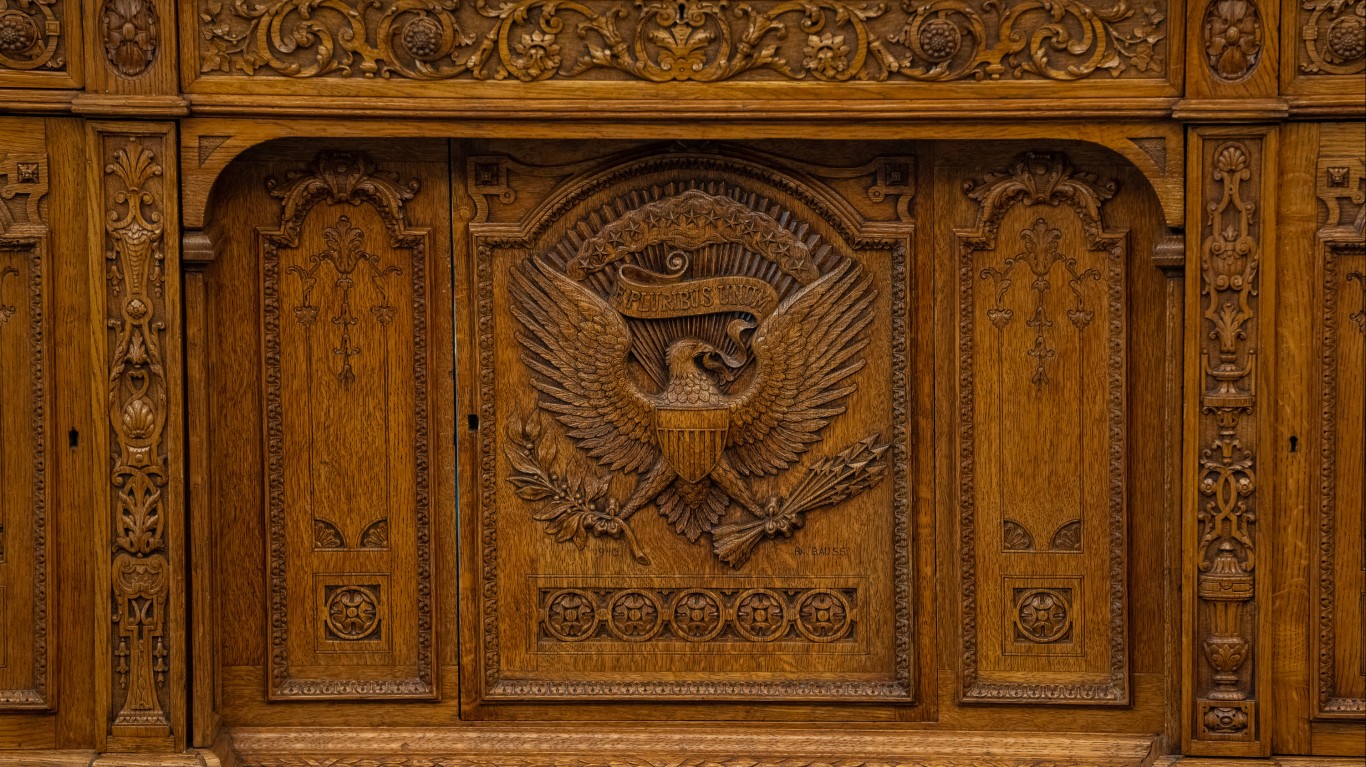
Vice President-elect JD Vance will be the 50th person to hold the office when he is sworn in in 2025. As he is serving a president already past the median life expectancy in the United States, he will stand a better chance than most of becoming president. At 40, he could become the youngest-ever President of the United States if he succeeds Trump before his term is over. In that scenario, he will be the first vice president to finish a presidential term in fifty years.
Conversely, if he sees out a term as vice president and attempts to run for president in 2028, the odds are not in his favor. Historically, only a handful of vice presidents have successfully been elected president. The next four years will be a very interesting time for Vance.

As vice president, John Adams cast 29 tie-breaking votes, the third most in American history, a total only bested by John C. Calhoun (31) and Kamala Harris (33). Adams did not enjoy playing second fiddle to George Washington as he described his position as:
the most insignificant office that ever the invention of man contrived or his imagination conceived
After serving two terms as George Washington’s vice president, John Adams won the first contested election for President of the United States in 1796. He narrowly defeated Thomas Jefferson, who became his reluctant vice president for one term. Adams lost the rematch in 1800 and retired from politics.

Before the Twelfth Amendment was ratified in 1804, the runner-up of the presidential election became vice president. Jefferson narrowly lost the first real presidential election but won a bitterly contested rematch four years later. The problems caused by the elections set the stage for reform and the present system.
Jefferson easily won reelection in 1804, and it would be many years before another vice president took over the top job.
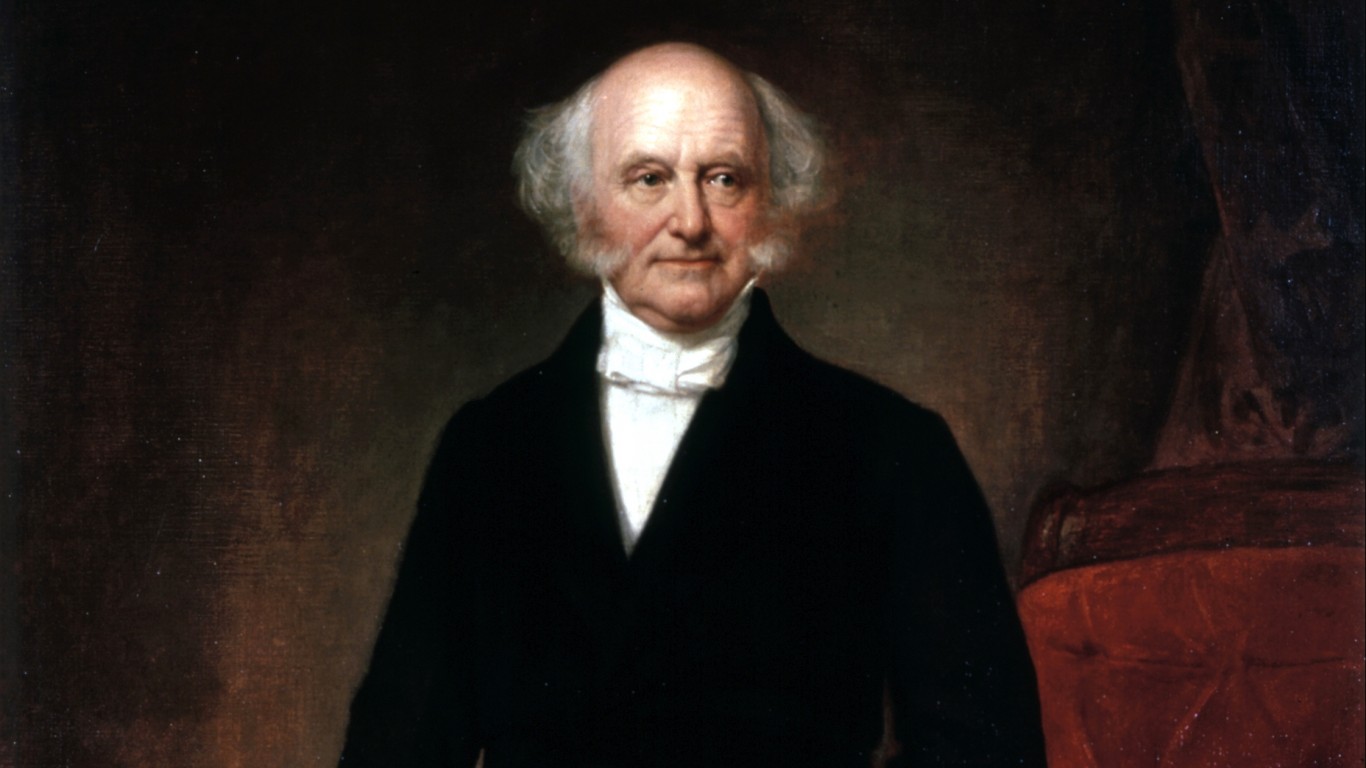
Martin van Buren was the first vice president to be elected president after the passage of the Twelfth Amendment. After stints as Secretary of State and ambassador to Great Britain, Van Buren served as Andrew Jackson’s vice president for Old Hickory’s second term.
Martin van Buren’s sole term as president was overshadowed by the Panic of 1837, and he lost re-election to the same man he defeated in 1836. However, William Henry Harrison would not enjoy the fruits of his political labor for long.

John Tyler was Old Tippecanoe’s running mate for the 1840 election, and the pair won a decisive Electoral College victory. Harrison’s presidency is remembered only for its extreme brevity. The unfortunate Harrison died just a few weeks into his term after falling ill following his inauguration. He was the first vice president to ascend after the death of the president. While he did not achieve a great deal in the White House, he did help set an important precedent for future succession by acting decisively in the wake of Harrison’s death. His last day in office ended with another first: the override of a presidential veto.

Millard Fillmore was something of a filler president. Like John Tyler before him, he served the bulk of a presidential term thanks to the Grim Reaper. After Zachary Taylor died, possibly from contaminated water and cherries in 1850, Fillmore saw out the rest of his term. He oversaw the Compromise of 1850 to at least delay the Civil War, but he would be the last Whig president. He was ousted at the 1852 convention in favor of Winfield Scot, who lost the general election.

Johnson became the 17th President of the United States just a few weeks into Abraham Lincoln’s second term. While Lincoln was always going to be a difficult act to follow, Johnson struggled to grasp the enormity of the job. He opposed civil rights and undermined Reconstruction. His terrible relationship with Congress came to a head in 1868 with his impeachment trial. Johnson escaped removal from office by a single Senate vote. He is widely regarded as one of the worst presidents in American history.

Chester A. Arthur became president after James A. Garfield died from complications a few weeks after being shot by a deranged gunman in June 1881. Though a product of machine politics himself, Arthur acted above partisanship when in the White House. He took on corruption and signed the Pendleton Act into law in 1883. Despite the misgivings over his ascension, Arthur proved to be a solid enough president. His failing health ruled out a second term, and he died not long after departing the White House.
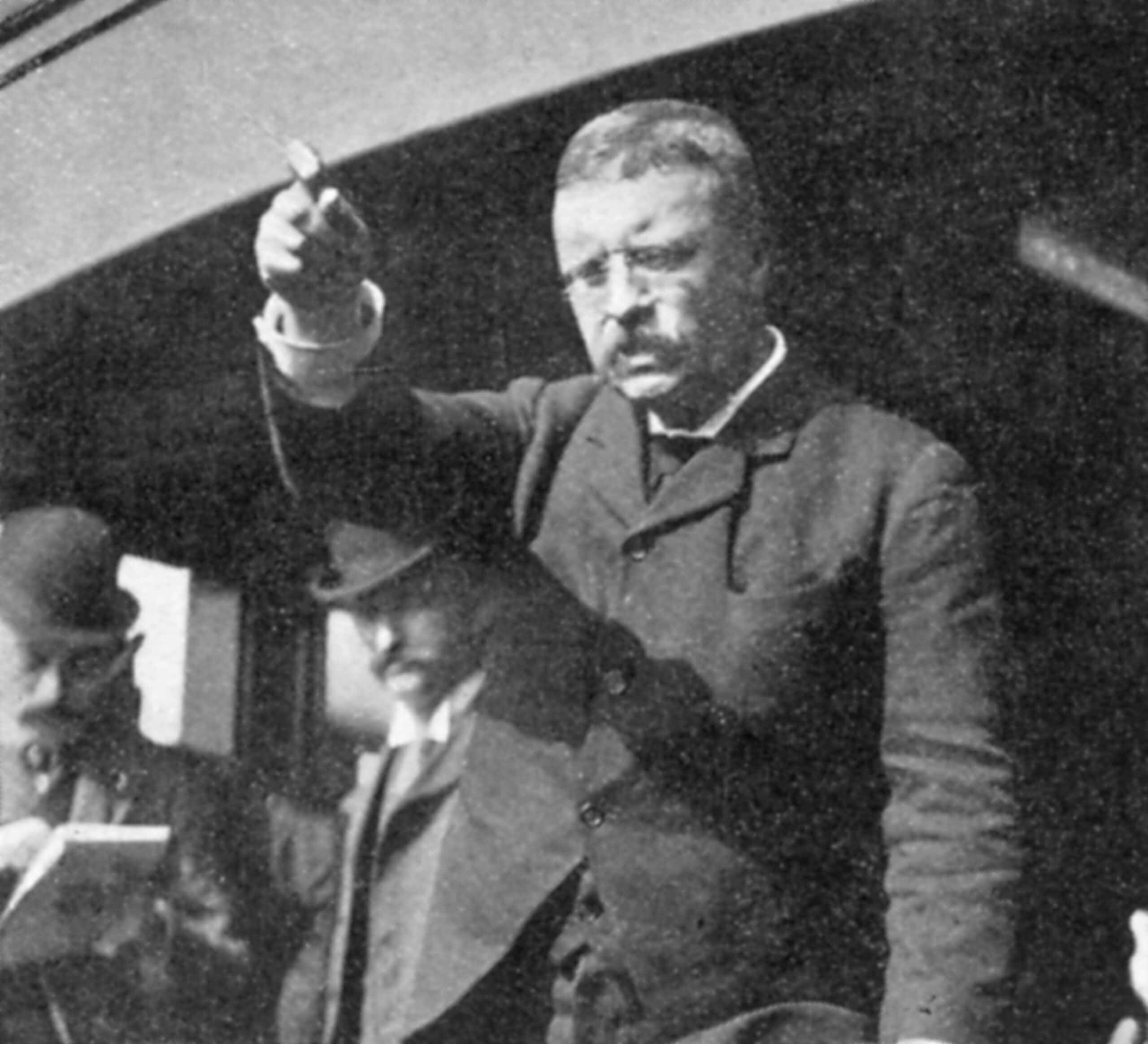
At 42, Teddy Roosevelt became the youngest-ever President of the United States when he succeeded the slain William McKinley in 1901. While the dynamic Roosevelt hated being vice president, he relished the top job. His innovative approach to managing the press helped him connect to voters in a way few other presidents managed before or since.
Roosevelt championed progressive causes, such as conservation, regulating big business, and ensuring food and drug safety. In foreign affairs, he oversaw the construction of the Panama Canal and negotiated the end of the Japanese-Russian War, for which he won the 1906 Nobel Peace Prize.
He declined to run again in 1908, though he would later bitterly regret that decision, and threw his weight behind close friend William Taft. However, after a prolonged period aboard, he decided to run again in 1912. After failing to secure the Republican nomination, he ran on a third-party ticket. Though he ran a vigorous campaign, he finished a distant second to Woodrow Wilson who profited handsomely from the Republican division.

Of the four major party candidates on the ballot in the 1920 presidential election, three would become president. Coolidge was the second. He was a surprise choice for Warren G. Harding’s running mate on the Republican ticket. Seeking a “return to normalcy” after World War One, Harding and Coolidge won a crushing victory in the general election. It was the first election where some women had the right to vote.
Harding struggled badly with the weight of the presidency and the scandals plaguing his administration. He died suddenly from a heart attack in 1923. Coolidge rather nonchalantly took the oath of office from his father before going back to bed. A small government conservative, Coolidge’s hands-off approach was popular at the time. The nation’s economic recovery helped win a full term in 1924. He decided against running again with a characteristically terse statement:
I do not choose to run for president in 1928.
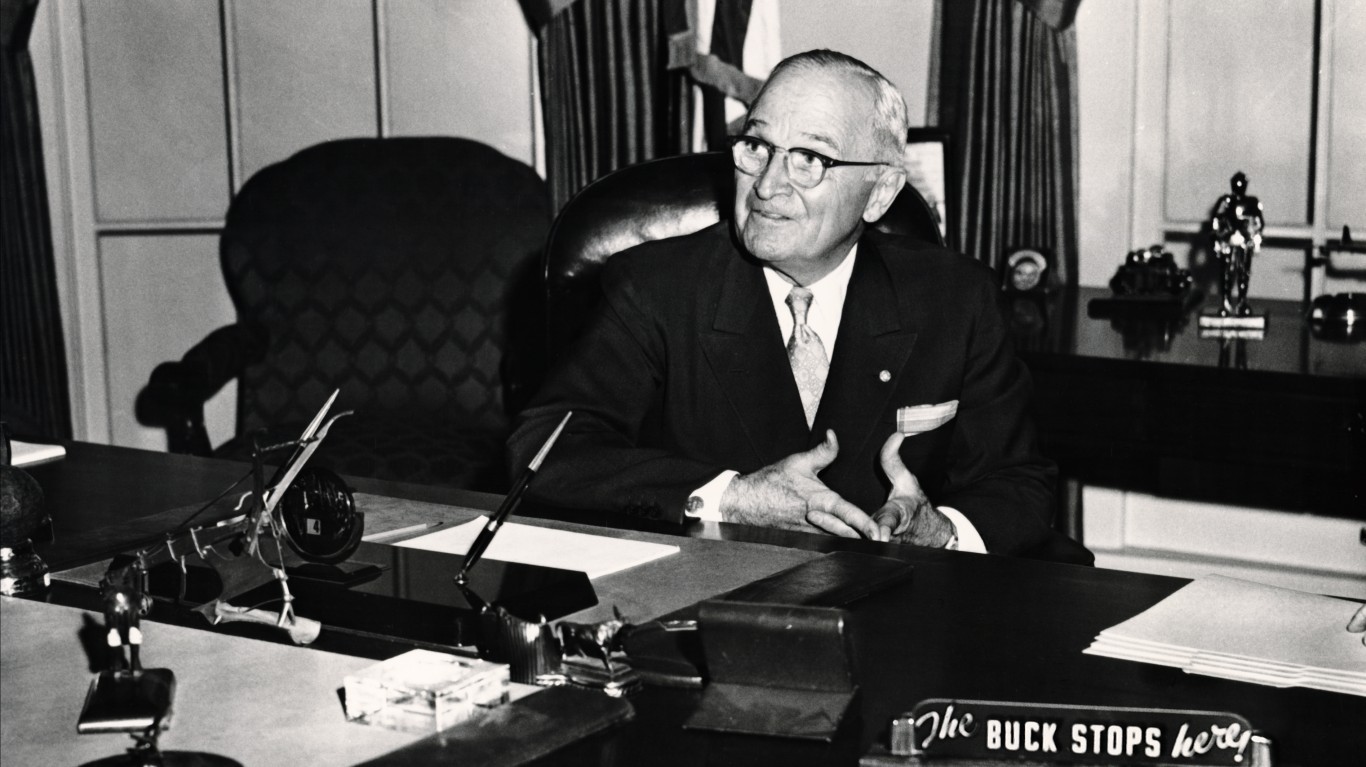
Harry S. Truman replaced Henry Wallace on the Democratic ticket for FDR’s fourth term in 1944. He was considered a safer option than the left-leaning Wallace by party insiders, but he wasn’t particularly keen on the job. Truman was vice president for less than four months. Roosevelt died in April 1945, leaving Truman to see the United States through the end of World War Two.
Truman made the landmark decision to use the atomic bomb on Japan in August 1945. While the morality of that decision is still debated today, it did prevent an invasion of Japan and the millions of deaths that would have resulted from it. Truman’s popularity waned after the war, and he was widely expected to lose the 1948 election. However, contrary to an infamous premature newspaper headline, Truman pulled off an upset victory. Truman was technically eligible for a third term as the recently passed 22nd Amendment didn’t apply to him. However, after a poor showing in the New Hampshire primary, he stepped aside.
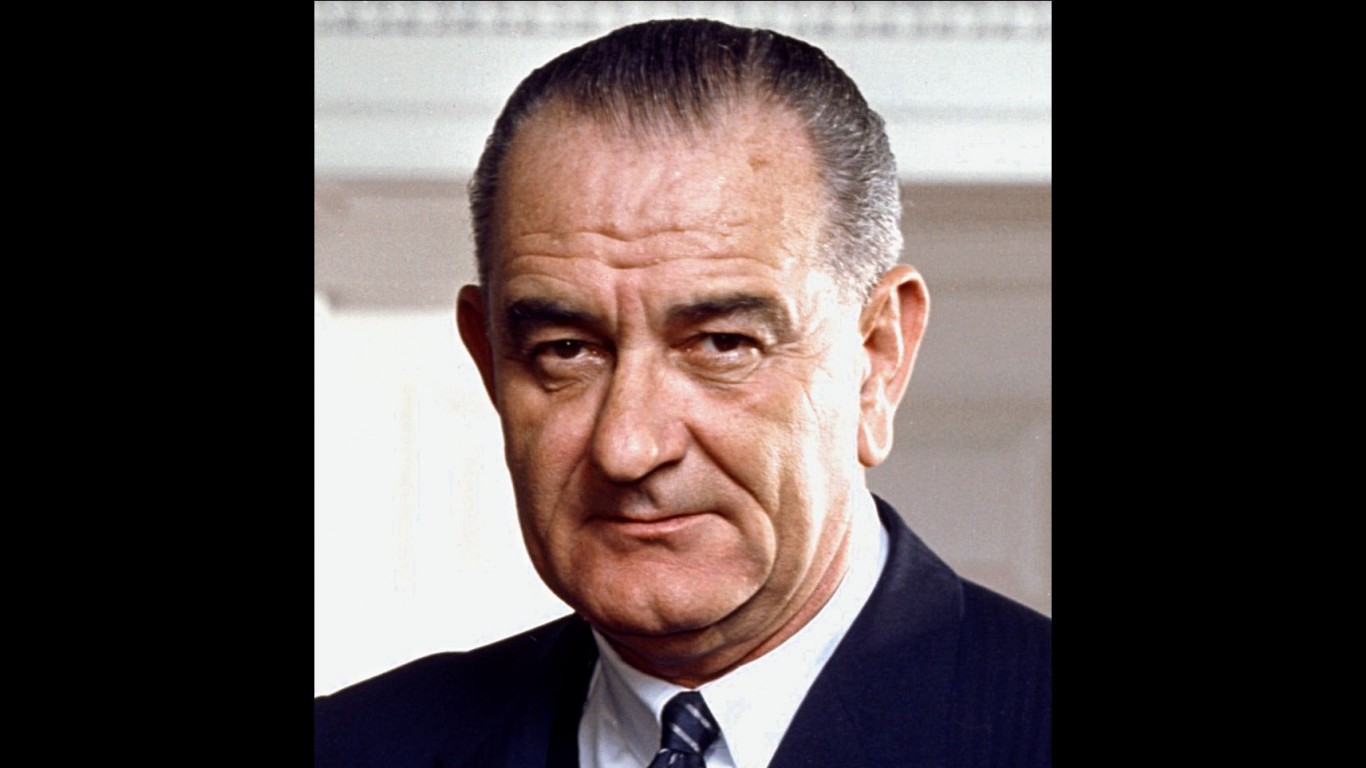
Lyndon B. Johnson was an imposing figure in Washington, known for his effective but heavy-handed methods for corralling political support. He is the last vice president to become president after the death of his predecessor. After John F. Kennedy was killed in Dallas in November 1963, Johnson took the reigns.
He oversaw landmark domestic legislation, including the 1964 Civil Rights Act and the Voting Rights Act of 1965. He pursued an ambitious domestic policy to tackle inequality and poverty head-on. However, the deteriorating situation in Vietnam undermined his domestic accomplishments. He chose not to seek reelection in 1968.
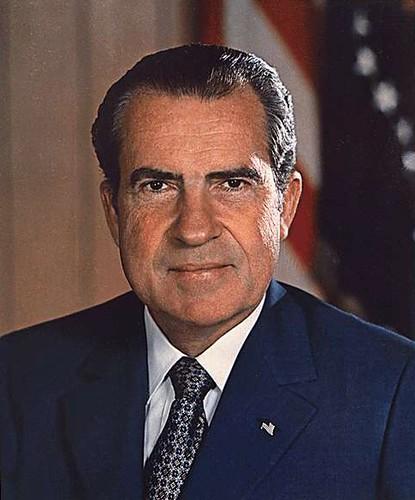
Richard Nixon was the first former vice president to ascend to the presidency via election since Martin van Buren. After losing an extremely close race against John F. Kennedy in 1960, he lost a gubernatorial race for California in 1962. Nixon’s political career seemed over. However, he capped a remarkable comeback with a victory over another ex-vice president, Hubert Humphrey, in 1968.
His greatest successes came in foreign affairs. In 1972, Nixon made historic trips to Beijing and Moscow, paving the way for future discussions and easing global tensions. However, his achievements abroad were undone by his conduct at home. He was caught up in the Watergate scandal and made history as the first and, to date, only President of the United States to resign.

Gerald Ford became vice president after Spiro Agnew resigned in disgrace in 1973. Ford was a highly experienced congressman who’d represented Michigan’s 5th district since 1949. He saw the vice presidency as a fitting conclusion to a long career in politics. However, just eight months later, another resignation propelled him into the highest office in the land.
Ford controversially pardoned Richard Nixon and struggled with the deficit, inflation, a recession, and Democratic opposition in the House of Representatives. He saw off a spirited challenge by Ronald Reagan in the 1976 Republican primary but fell short against Jimmy Carter in the general election.

George H. W. Bush served two terms as vice president under Ronald Reagan after losing the 1980 Republican primary to him. As vice president, Bush traveled extensively and, despite their personality differences, formed a good working relationship with Reagan. After a slow start in the 1988 primary, he bounced back strongly to dominate Super Tuesday and clinch the nomination. He easily defeated Michael Dukakis in the general election.
Bush’s foreign policy experience served him well in a rapidly changing world. He enjoyed a surge in popularity after the Gulf War and the highest-ever approval rating of 89%. That total was later surpassed by his son in the wake of 9/11. However, a struggling economy, discontent from the Christian right, and an unprecedented showing by a third-party candidate combined to consign Bush to a single term.

Joe Biden first ran for president in 1987, aged 44, but withdrew after a little over three months. His second attempt came twenty years later and also fell short but was chosen as Barack Obama’s running mate. After two terms as vice president, he was considered a strong contender for the nomination in 2016 but declined to run. He succeeded at the third attempt for the White House in 2020.
While he enjoyed some legislative successes and held the government trifecta for two years, he struggled to pass his agenda. He initially declared he would run for reelection but withdrew after a disastrous debate performance raised questions about his age and fitness for office. His late departure from the race prevented an open process for selecting his would-be successor. Kamala Harris slumped to a decisive defeat to Donald Trump in the 2024 election.

It might seem like a perfect springboard for the presidency, but most vice presidents end up as mere footnotes in history. However, some of the most consequential US Presidents started out playing second fiddle. Teddy Roosevelt and Lydon B. Johnson passed key legislation only after fate handed them the reigns of power. Others, like John Tyler and Andrew Johnson, squandered nearly full terms in power. Van Buren, Nixon, Bush I, and Joe Biden succeeded at the ballot box, whereas many other former vice presidents failed. It should also be noted that Nixon did not succeed in his first run for president in 1960. The odds of winning an election as a former vice president are actually incredibly unfavorable historically.
Time will tell if the next vice president steps up or disappears into historical obscurity.
If you’re one of the over 4 Million Americans set to retire this year, you may want to pay attention.
Finding a financial advisor who puts your interest first can be the difference between a rich retirement and barely getting by, and today it’s easier than ever. SmartAsset’s free tool matches you with up to three fiduciary financial advisors that serve your area in minutes. Each advisor has been carefully vetted, and must act in your best interests. Start your search now.
Don’t waste another minute; get started right here and help your retirement dreams become a retirement reality.
Thank you for reading! Have some feedback for us?
Contact the 24/7 Wall St. editorial team.